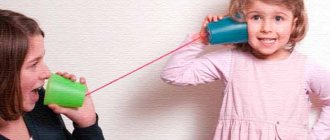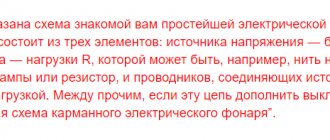Normal speech development of a child
What time does a baby start talking? In the first months of life, the child has no speech. The baby shows a desire to communicate by smiling and crying. By the second month, the baby begins to buzz. This stage of development is very important. Walking allows you to prepare and develop the muscles of the articulation organs.
By 7-9 months of age, the baby begins to babble. Syllables appear in speech that do not carry awareness. The child simply mutters ba-ba-ba, ma-ma-ma and other sets of letters. At 9-11 months, he already understands well the conversation and intonation of others. Knows about 50-100 words by ear. At 11-14 months of age, the baby begins to pronounce words. The vocabulary already contains the following words: “mom”, “dad”, “woman”, “uncle”, “woof-woof” (dog), “bo-bo” (hurt), “bi-bi” (car) and other. There should be 10 words by the year.
A one-year-old child carefully follows the movements of his relatives’ lips during a conversation and tries to repeat the words and articulation of adults. If you constantly talk to your baby, he will quickly learn to repeat words and reproduce them correctly.
Girls begin to speak 2-4 months earlier than boys. This occurs due to differences in brain structure. In boys, the connection between the hemispheres is less developed, which slightly complicates the conduction of nerve impulses. Therefore, boys start talking a little later, which is the norm.
At one and a half years old, the child is already forming two-word phrases. He says in an imperative mood: “Dad. Give”, “Mom. Go." By 18 months of age, he pronounces words in the plural.
By the age of two, a child already knows about 1000 words. At this age, children begin to ask questions: “What is this?”, “Who is there?”, “Why?” In a 2-year-old child, you can hear small sentences: “This is a dog,” “This is a chair,” “Give me a bear,” “Where is daddy?”
Signs your child is ready for potty training
To make this process easy and without discomfort, Komarovsky advises observing the baby for a while to detect signs of his readiness to learn. They should be both physiological and psychological. It's time to start potty training if:
- the baby can communicate in a way accessible to him (gesture, word or sound) about the desire to go to the toilet;
- the child’s bowel movements can be called stable;
- it can stay in a dry diaper for more than 1.5 hours;
- the baby knows the parts of his body, their purpose, as well as the names of clothes;
- he understands the meaning of the words “poop” and “pee”;
- the child shows negative emotions about the wet/stained diaper and tries to remove it;
- The baby wants or knows how to go into and out of the toilet on his own.
Up to contents
Komarovsky on the development of speech function
Dr. Komarovsky is a pediatrician who became famous thanks to his programs. In them, he gives recommendations to parents on children's health and education. In television programs, the doctor spoke more than once about the development of speech.
Komarovsky talks about the importance of a child’s communication with parents and people around him. According to him, the baby develops correctly when parents are present during the game. Adults help him explore the world. During communication, mom or dad teach how to throw a ball, what to do with a pyramid, and so on, and give a task (instructions). Example: “Take the ball and bring it to mom,” “Throw the ball to dad.”
While playing together, the baby learns to listen and analyze the parents’ speech. He has a desire to learn to speak, pronounce words correctly, construct phrases and sentences. This is very important, especially at the stage of transition from understanding the oral speech of others to reproducing it independently.
Ask questions
And it doesn’t matter at all that the baby can’t answer them yet, and doesn’t even realize the meaning of the question. But he hears a change in intonation and thus becomes acquainted with the language native to him and his parents. A little time will pass and you won’t even notice how your child will learn to clearly distinguish interrogative intonation.
Source: Fotolia
Etiological reasons for the lack of speech in 2-year-old children
There can be many reasons for the lack of speech. The attention of parents, the health of the child, mother and father are of great importance for speech activity. Also, delayed speech development (SDD) is provoked by stress.
Etiology of speech delay:
- Injuries during childbirth, complicated pregnancy history.
- Neurological pathologies.
- Hearing loss, deafness.
- General underdevelopment of speech function.
- Mental retardation, mental retardation.
- Autism, cerebral palsy.
- Attention deficit hyperactivity disorder.
- Insufficient attention from relatives.
Speech may be delayed by a complicated history of pregnancy and childbirth. Hypoxic brain damage has a bad effect on speech development. It occurs due to placental abruption, strong uterine tone throughout pregnancy, and late toxicosis (eclampsia). Eclampsia is a serious problem during pregnancy, as it severely damages the blood vessels of the placenta. In this case, blood flow is hampered, the child experiences a deficiency of nutrients and especially oxygen.
With strong uterine tone, a spasm of blood vessels occurs. The blood flow is partially blocked, the baby experiences hypoxia. With partial placental abruption, the same thing happens. Hypoxic damage to the brain greatly impedes its development. The formation of ischemic foci begins in the brain tissue, which later manifest themselves as speech disorders.
Brain function is greatly influenced by methods of assistance during childbirth and poor labor performance. Damage to the nervous system provokes the use of a vacuum extractor and obstetric forceps during obstetrics. It is also undesirable to use the technique of expelling the child by pressing on the stomach.
Subsequently, delayed speech development is caused by aspiration of amniotic fluid, entanglement with the umbilical cord (especially double). The child experiences hypoxia. Prolonged labor of more than 12 hours is dangerous for the child due to hypoxic damage to brain tissue.
Hypoxic conditions result in delayed neuropsychic development, mental retardation, cerebral palsy, autism, attention deficit disorder and hyperactivity.
Smoking, drinking alcohol, and using drugs during pregnancy have a negative effect on the development of speech function. These habits can lead to deafness (congenital), gradual hearing loss, and hypoxic damage to brain tissue. Smoking, alcohol, and drugs provoke impaired brain development, prematurity, threat of miscarriage, infectious diseases of early age, and autoimmune pathologies.
Speech delay is possible in autism. An autistic child is unable to communicate normally with parents and children. Lack of interaction with others leads to delayed speech development or absence of speech.
Etiology of the absence of speech function according to Komarovsky
Dr. Komarovsky, in addition to the main causes of delayed speech development, identifies others. The main problem for modern parents is increased attention to speech development. If the child does not start speaking before the age of 2, the relatives are very worried, nervous, and take the child to a speech therapist, neurologist, or otolaryngologist. Such increased attention forces the child, on the contrary, to continue to remain silent.
Many parents rush their baby to talk. They begin to study it intensively, which reduces the speed of speech development. The child wants to play, but he is forced to sit over books, drawings, cards. Children at 1.5 years of age experience difficulties with attention, so they quickly get bored with activities. Tasks that are not appropriate for age, prolonged sitting only repel the preschooler from studying. He may refuse to talk at all.
Komarovsky often talks about a modern problem - gadgets. Parents do not want to work with their child. They devote more time to the computer, tablet, and TV.
Relatives early teach the child to play games on a tablet, use phones, watch cartoons, and read few books. Games and animation do not allow speech and imagination to develop. It is especially harmful to let a preschooler over 1.5 years old use gadgets. At this time, there is a surge in speech development. If you miss the early period of formation of speech function, the child will be severely delayed.
The next problem, according to Komarovsky, is the high employment of adults. Parents living in cities are constantly at work. Some of them work until late. On weekends, city residents try to relax: go to clubs, restaurants, go fishing, go shopping, watch TV, go to the gym. For this reason, the child does not have time to communicate with relatives. He is either with a nanny or in kindergarten, and this is not enough for full speech development. A preschooler may protest and become completely silent.
One of the reasons for silence is the lack of motivation to speak on the part of parents. If a preschooler is silent, this does not always mean that he cannot speak. The child was not motivated by his parents to develop speech. He responds adequately to requests and tasks without using speech, so he sees no point in mastering speech skills. The baby often simply hums, nods, or points to an object or relative.
Preventative examination by a speech therapist - is it necessary or not?
Home - About speech therapy - Preventive examination by a speech therapist - is it necessary or not?
As a rule, parents do not attach much importance to preventive examinations by a speech therapist. And completely in vain, because... Today, many children have some form of speech impairment.
Preventive examinations are a common occurrence in medicine, take, for example, the examination of a child in the first year of life, when after a certain period of time the baby is examined by various specialists (neurologist, ophthalmologist, surgeon, etc.). And no one doubts the need for such examinations, since they are aimed at tracking the dynamics of development. In addition, with their help, it is possible to timely identify any developmental disorders, since there is no guarantee that the baby’s health status will not change due to various factors. And if any problems arise, early diagnosis will help resolve them most effectively.
But, if no one doubts the need to monitor the child’s health, then little attention is paid to the preventive examination of a speech therapist in our society. The opinion has become firmly established that a speech therapist only works with children 4-5 years old, and if there are any problems, then you can wait and they will resolve themselves by this age. This is supported by numerous examples from the personal experience of friends and relatives (“Mine only started talking at five and nothing, now he’s chatting incessantly,” “And you started talking too late, you’ve grown up, you talk”). And therefore, parents’ vigilance decreases, and they believe that it is not at all necessary to contact a speech therapist. Yes, there are cases when a child begins to speak later than his peers, and then speech appears and in a few months the baby catches up. Alas, the opposite situation often occurs when a child does not begin to speak by the age of three, five, or six, and the lag in speech leads to a secondary lag in mental development. This explains the importance of timely diagnosis of speech by a speech therapist.
Having opened the children's medical record, we will see that it is recommended to visit a speech therapist 2 times: at 3 years old (before entering kindergarten) and at 6 years old (before school).
But there are methods for examining speech at an earlier age. And if parents or doctors see a delay in a child, then a speech therapist can conduct a speech examination up to 3 years.
It would seem, how can one check speech if it, as such, does not yet exist? Let's figure it out. The baby cannot speak, but, nevertheless, he communicates with his mother and the adults around him with the help of a smile, facial expressions, a cry, a gesture, i.e. uses nonverbal communication. The baby looks at the faces of those around him and copies their facial expressions. There are a lot of funny videos on the Internet where babies of 3-4 months repeat their sounds or intonation after mom or dad. With normal development, a child should have about 10 words by the age of one year (Example: “day”, “mom”, “dad”, “ki-kisa”, “lala”, etc. These will most likely be onomatopoeias or fragments of words. At the same time, the baby can show a lot, even if he cannot pronounce it on his own (i.e., these words are in the passive dictionary, the child understands them.) Everyone is familiar with the situation when a one-year-old baby’s mother asks: “Where are your ears? Eyes? Back?", and the child points with his finger. "Show me which car passed?" - the child imitates a truck and “snorts,” while he says “beep beep” to a passenger car.
If the baby is “silent, like a guerrilla,” and makes no attempts to communicate, this is an alarming factor.
Let's take a closer look at what a speech therapist will study in a child under 3 years old.
First of all, the specialist will find out from the parents information about the course of pregnancy and childbirth. Then he will ask how motor development proceeded (when he began to hold his head up, roll over, sit, etc.), how the stages of humming and babbling went through (age, activity of these processes). He will ask how feeding was organized (breastfeeding or artificial feeding), whether there were any problems during feeding (refused to latch on, whether he burped often). All this will give an idea about the child’s health, the level of his physical development, and possibly about some deviations, the presence of which must be taken into account.
When diagnosing a child, attention is paid not only to the words the child uses, but also to how the child understands speech. For example, by the age of one year, a baby can already show familiar toys, body parts, follow simple instructions (“Give me a pen,” “Bring a doll”) and understand the meaning of the word “no.”
At an older age (3 years), active speech is assessed more closely: whether it constructs simple sentences, whether it uses prepositions in speech (on, under, in). Attention is also paid to the development of phonemic hearing; at 3 years old, the child can already distinguish similar words by ear (house-lump, mouth-mole, rat-lid). When assessing sound pronunciation, pay attention to the sounds of early ontogenesis (P, B, T, D, M, N, V, F, X, K and their soft pairs and vowels).
At older ages (5-7 years), more stringent requirements are imposed on the quantity and quality of children’s speech. First of all, sound pronunciation is studied (since by the age of 5.5 all sounds are normally pronounced). Phonemic hearing is also examined, but in addition to the ability to distinguish similar words, the ability to isolate a given sound from a word and the ability to determine where this sound is located (beginning, middle, end of the word) are tested. Vocabulary is not left without attention. Children are tested for knowledge of low-frequency words (Example: name “flower bed, monument, wreath, waterfall”), the ability to form new words (word formation) and change words by cases and numbers (word inflection). Much attention is paid to coherent speech (story based on a picture, life story, etc.).
All this is necessary in order to assess how prepared a preschooler is for school, since insufficient vocabulary, incorrect use of grammatical norms of the language and impaired phonemic hearing will interfere with the development of the school curriculum, so it is necessary to identify this and correct it before entering school.
How can parents understand whether a consultation with a speech therapist is necessary or not?
To do this, you need to pay attention to factors such as:
- does the child understand the speech of others;
- whether the first words appear by the age of one year;
- whether the words change over time or remain at the level of onomatopoeia (bi-bi-atina-masina-machine, meow-kitya-cat);
- does he use simple phrases (mom, let’s go for a walk);
- does it replace speech with gestures (points with a finger if something is needed without words);
- absence of phrasal speech by 3 years;
- incorrect pronunciation of sounds of early ontogenesis (P, B, M, N, X, G, T, D and their soft pairs, and vowels).
If you observe any of the above, then you should not wait 3,4,5 years; you should immediately seek help from a qualified specialist.
Examples from speech therapy practice
:
Nastya is 3 years old. They turned to a speech therapist because the girl did not even speak words, she communicated with gestures and individual sounds. According to the mother's stories, early development was delayed, the girl did not babble, and she started walking late. Fine motor skills are not developed, hands are weak. At the same time, speech understanding is intact. The girl was referred for consultation to a neurologist, ENT specialist, and audiologist. As a result of complex treatment over the course of six months, the girl began to pronounce individual words, and her motor skills improved.
Another example is Olya, 6 years old. Speech consists of individual syllables, spoken speech is not always understood, fine motor skills are not developed, and the passive vocabulary is below the age norm. When asked if they had consulted specialists before, my mother replied that the neurologist said to wait 5 years, as if she would speak on her own. Therefore, no measures were taken to correct the girl’s speech.
Denis, 5 years old. The child speaks a lot and well, but the sounds Ш, Ж, Р and Рь never appeared in his speech. During the consultation, the speech therapist examined all aspects of speech and identified the cause of the difficulties in sound pronunciation (the child had a “sluggish tongue”; he would not have been able to master these complex sounds on his own). The boy began to study regularly, and soon the problems with sound pronunciation were resolved.
As we see, in the second case, a lot of time will pass before the girl masters speech skills, and she will not be able to study in a public school. All this could have been avoided if the parents had consulted a speech therapist earlier.
Thus, a preventive examination by a speech therapist is necessary because it allows one to identify problems at an early stage, when the brain is even more plastic and will be better amenable to corrective influences. No matter what anyone says, if a child does not speak by the age of 3, it is better to immediately contact a qualified specialist rather than hope for a miracle.
Share:
Find out more about the Center's services and sign up for a consultation or lesson
You can call (812)
640-90-77
, or by filling out the form below.
Komarovsky's recommendations
For worried parents whose baby has not spoken by the age of 2, Dr. Komarovsky advises visiting a doctor. The examination includes consultations with a neurologist, speech therapist, psychologist, and otolaryngologist. An ENT doctor is needed to rule out deafness or hearing loss. To do this, the specialist will refer you for a hardware test called an audiogram. It will determine your hearing level and range of sounds.
A neurologist is the main specialist working with preschoolers who have delays in speech function. It will help identify the causes of speech deviations. The doctor will conduct the necessary examination (history, examination), prescribe additional techniques: neurosonography, electroencephalography, magnetic resonance imaging and others. If necessary, he will recommend therapy (Encephabol, Pantogam and other drugs), which will give impetus to the appearance of speech function.
During the examination, the neurologist will find out:
- General development of the baby (when he began to smile, walk, understand the conversation of others).
- Skills at the time of examination.
After the examination, the neurologist refers you to a speech therapist for consultation. The specialist conducts an examination and special tests for speech function. After the first visit, the speech therapist writes a conclusion and draws up a lesson plan. While working with the child, the teacher develops speech function: teaches him to pronounce sounds, words, and sentences properly.
Common pathologies that a speech therapist detects:
- Short bridle.
- Increased muscle tone of the articulatory apparatus.
Consultation with a psychologist is necessary for all children with speech impairments. The specialist will assess the state of speech function and identify pathology. A psychologist is also necessary to exclude or confirm psychological trauma, chronic stress and other conditions. Based on the results of the examination, treatment is prescribed (conversations, art therapy, trainings, dolphin therapy, etc.), if required.
Doctor's advice:
- Spend more time with your baby.
- Constantly articulate all your actions and intentions.
- Do not give your preschooler phones or tablets, and limit watching cartoons.
- Read more, memorize nursery rhymes, poems, songs.
- Do not scold your child when he refuses to say something.
- Ask questions to the baby, namely: “What do you see in the picture?”, “Who came?”, “What color is the hat?” and so on.
- Organize the baby’s communication with peers and older children.
- Protect from stressful situations and conflicts in the family.








